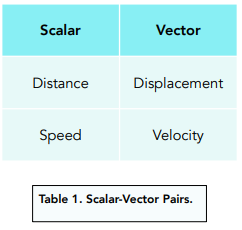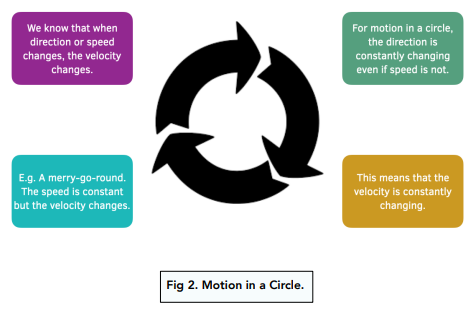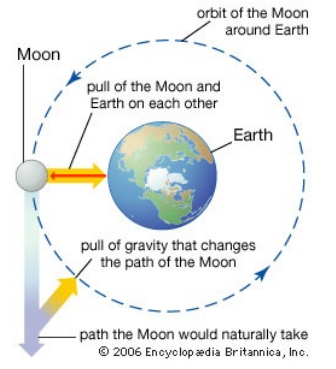Velocity (GCSE Physics)
Velocity
Velocity of Objects
- Velocity is a vector quantity. Unlike speed, velocity is a vector. Vectors have both magnitude and direction, which means that we know both how fast the object is travelling and which direction it is travelling in.
The velocity of an object is its speed in a given direction.
- Velocity is not constant. If we change either of the factors that determine velocity, then velocity will also change. These factors are the speed and direction of the object. For example, if an object speeds up or slows down, then its velocity will change. Similarly, when an object changes direction, its velocity will also change.
Now that we have met the terms distance, displacement, speed and velocity, we can put them into scalar-vector pairs. The table illustrates which are the scalar quantities and which are the vector quantities:

Special Case: Motion in a Circle
Circular Motion
We know that velocity changes when either the speed of an object changes or the direction of an object changes.
When an object travels in a circle, it is changing direction constantly. This constant change in direction will result in a constantly changing velocity of the object. However the speed remains the same.

An everyday example of circular motion is a merry-go-round. When a child is on a merry-go-round, they will be travelling at a constant speed. However, they will be constantly changing direction. Since velocity depends on both speed and direction, this results in a constantly changing velocity.
Centripetal Force
To change the direction an object is moving, a force must push it in a new direction. For motion in a circle to occur, a force must be constantly pushing an object towards the centre of the circle. This inwards resultant force is known as the centripetal force.
This force allows the object to constantly change direction and therefore travel in a circular motion.

In the case of the Moon, the force of gravity acts as a centripetal force. This force keeps the Moon moving in a circle around the Earth. We can say that the Moon forms an orbit around the Earth.





Still got a question? Leave a comment
Leave a comment